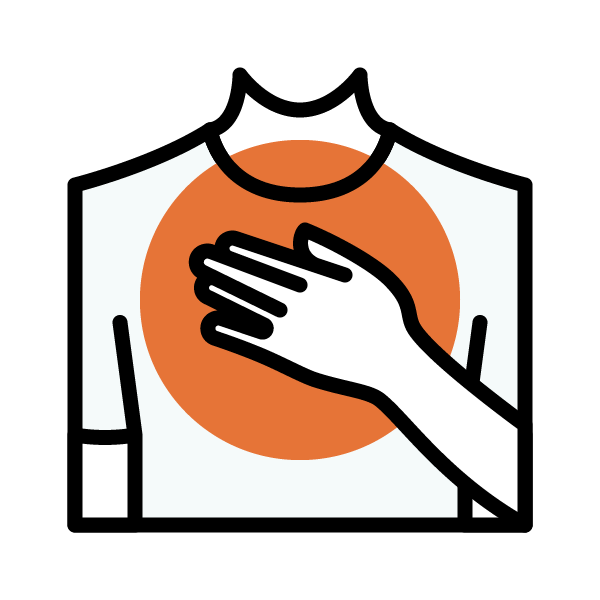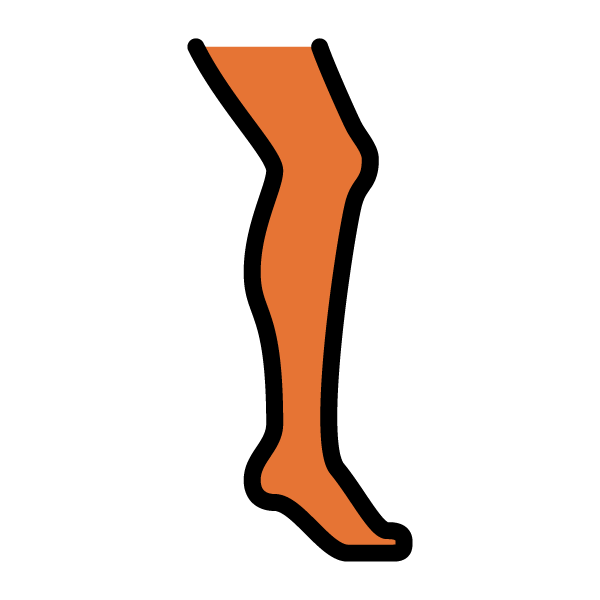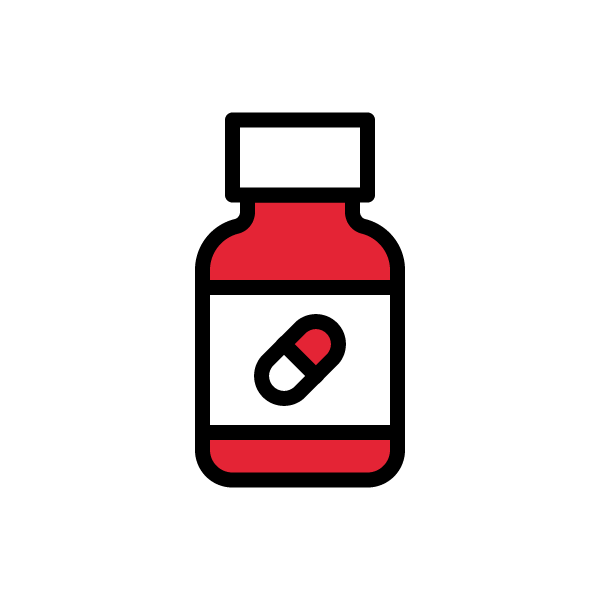Blood Clot Basics
Signs and Symptoms of Blood Clots in the Body
Some people may not have any symptoms of pulmonary embolism (PE) or deep vein thrombosis (DVT). If you experience any of the following symptoms it’s important to seek medical treatment right away. Untreated DVT can often lead to life-threatening complications, including PE. If you experience symptoms of PE, call 911.
Common signs and symptoms of PE include:1

- Chest pain or discomfort, which may worsen with deep breathing, coughing, or exertion.
- Difficulty breathing.
- Rapid or irregular heartbeat.
- Coughing up blood.
- Dizziness or lightheadedness.
- Sweating.2
When present, symptoms of DVT may include:1

- Swelling in one arm or leg (sometimes suddenly).
- Pain or tenderness in the leg (or arm) that may only be present when standing or walking.
- Feeling of increased warmth in the area of the leg or arm that is swollen or that hurts.
- Redness or discoloration of the skin.2
Who's at Risk?
Just about anyone can experience PE or DVT, but certain factors may increase your risk, including:1

- Having an injury to a vein.
- Slow blood flow from limited movement, such as being confined to a hospital bed or sitting for long periods.
- Increased estrogen, from contraceptives, hormone replacement therapy, or from pregnancy and up to 3 months postpartum.
- Certain chronic conditions, including heart disease, lung disease, cancer and its treatment, and inflammatory bowel disease.
- Other factors include family history, being overweight, recent surgery or trauma, and being 55 or older.3
Preventing Blood Clots
If you have risk factors for PE or DVT or have experienced it before, talk to your doctor about the following preventive measures:1

- Graduated compression stockings.
- Anticoagulant medications.
Other ways to prevent blood clots:1

- Get moving. When sitting for long periods, such as during travel, get up and walk around every hour or two.
- Wear loose fitting clothes.
- Exercise your legs. Alternate raising and lowering your heels while your toes are on the floor and raising and lowering your toes while your heels are on the floor. Tighten and relax your leg muscles.
- Maintain a healthy weight.
- Avoid a sedentary lifestyle.1
Management Options
Management of VTE must always be discussed with your doctor to determine the best approach for you. Some options include:1

- Anticoagulants or blood thinners to keep blood clots from getting larger and stop new clots from forming.
- Thrombolytics (commonly referred to as “clot busters”) are used in severe cases to dissolve the clot.
- Endovascular intervention, such as mechanical thrombectomy, a minimally invasive procedure that physically removes clot from blocked blood vessels.
- Computer assisted vacuum thrombectomy (CAVT), an advanced, minimally invasive procedure used to remove blood clots from the veins and arteries. CAVT uses a vacuum guided by a computer to remove clot.
More Resources for Patients
Management of VTE must always be discussed with your doctor to determine the best approach for you. Some options include:
1. Centers for Disease Control and Prevention. (2024, May). About Venous Thromboembolism (Blood Clots). https://www.cdc.gov/blood-clots/about/index.html. Accessed December 20, 2024
2. National Heart, Lung, and Blood Institute. Venous Thromboembolism; Pulmonary Embolism (PE). https://www.nhlbi.nih.gov/health/pulmonary-embolism. Last updated September 19, 2022. Accessed February 25, 2025.
3. Centers for Disease Control and Prevention. (2024, May). Understanding Your Risk for Healthcare-Associated VTE (Blood Clots). https://www.cdc.gov/blood-clots/risk-factors/ha-vte.html. Accessed March 19, 2025.
